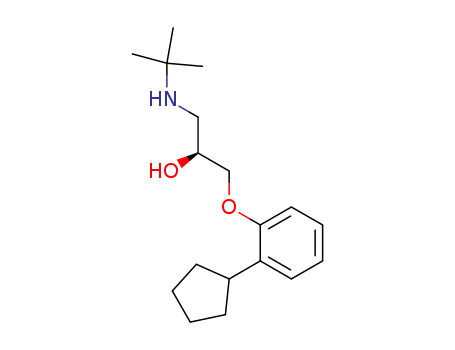- Chemical Name:Penbutolol
- CAS No.:38363-40-5
- Deprecated CAS:61914-98-5
- Molecular Formula:C18H29 N O2
- Molecular Weight:291.434
- Hs Code.:
- European Community (EC) Number:253-906-5,253-074-3
- UNII:78W62V43DY
- DSSTox Substance ID:DTXSID8023428
- Nikkaji Number:J22.286K
- Wikipedia:Penbutolol
- Wikidata:Q944244
- NCI Thesaurus Code:C66336
- Pharos Ligand ID:ZKFP9HJQWHJQ
- Metabolomics Workbench ID:43518
- ChEMBL ID:CHEMBL87418,CHEMBL1290
- Mol file:38363-40-5.mol
Synonyms:Betapressin;Hoe 893d;Hoe-893d;Hoe893d;Penbutolol;Penbutolol Sulfate;Penbutolol Sulfate (2:1);Sulfate, Penbutolol






